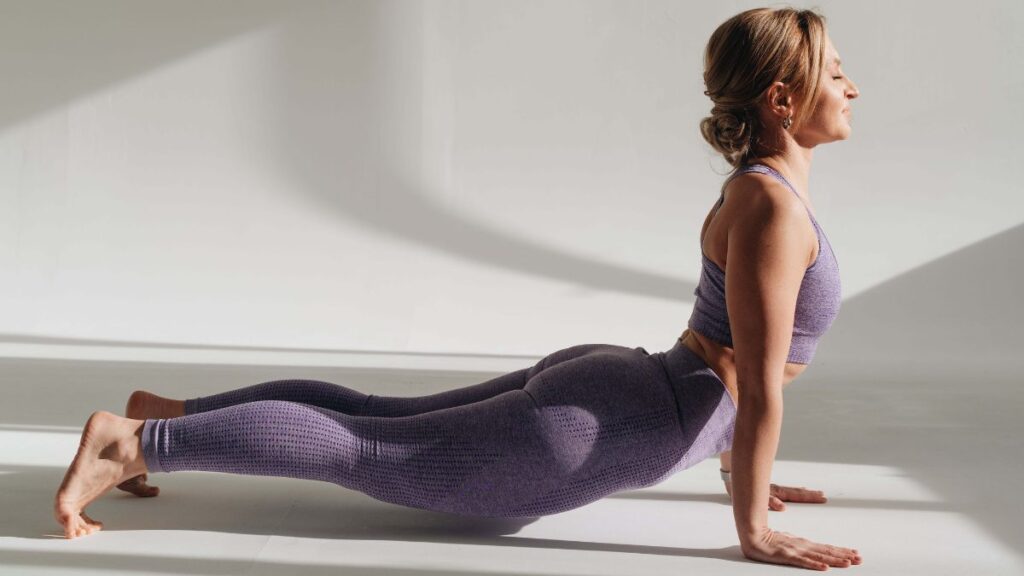Can Ice Baths Make You Sick? What You Need To Know?

Last Updated on October 9, 2025
Muscle soreness fades, but the chills linger. You’ve heard the hype about cold therapy, and you’ve seen athletes stepping into tubs packed with ice.
The benefits sound tempting, faster recovery, less inflammation, a sharper mind. But the nagging question remains: can ice baths make you sick? The truth is, ice baths can be both a supportive recovery tool and a source of risk if not approached wisely.
In my work as a wellness and recovery consultant, I’ve seen how clarity makes all the difference. Recovery should restore your body, not push it to the point of harm.
This guide unpacks the risks, signs of overdoing it, and practical safety steps so you can decide if cold therapy truly fits your path to wellness.
Can Ice Baths Make You Sick? Quick Answer!
Ice baths can make you sick if they’re done too long, too cold, or if you have underlying health issues. Risks include hypothermia, immune suppression, dizziness, and respiratory stress.
For most healthy adults, though, ice baths are safe when kept between 50–59°F (10–15°C) for 5–10 minutes. The key lies in moderation, awareness of your health status, and respecting your body’s limits.
Why People Worry About Ice Baths Making Them Sick

There’s a reason this question pops up often. When we feel that bone-deep chill after stepping out of cold water, it’s easy to connect it with getting sick. The body shakes, the nose runs, and the mind jumps to the idea of catching a cold. But is that really what’s happening?
The concern often comes from old beliefs, that being in the cold “causes” illness. In reality, viruses and bacteria make us sick, not the temperature itself. Still, cold exposure can weaken the body’s defenses if it’s too intense.
That’s why some people report fatigue or feeling under the weather after repeated ice baths.
The emotional piece matters too. If recovery leaves you anxious or shivering, it defeats the purpose of restoration. So let’s break down where the real risks actually come in.
Real Risks Of Ice Baths (When They Can Make You Sick)

Cold therapy isn’t one-size-fits-all. Done safely, it’s beneficial. Pushed too far, it can tip the body into dangerous territory. Here are the main ways ice baths may lead to illness or harm.
Hypothermia and Overexposure
Too much cold for too long? That’s when hypothermia risk sets in. Core temperature drops, and your body can’t warm itself back up. Warning signs include uncontrollable shivering, slurred speech, and confusion. If ignored, this becomes a medical emergency.
Research on athletes shows that staying within 10 minutes at safe temperatures limits this risk. The lesson? More ice or longer duration doesn’t mean more benefit, it just adds danger. A mindful recovery practice values balance over extremes.
Read Also: How Many Ice Baths A Week?
Immune System Stress
Can cold water really weaken your immune system? In small, controlled doses, cold stress may actually boost resilience. But overexposure does the opposite.
When you repeatedly shock the body without recovery time, your defenses falter. That’s when frequent colds or lingering fatigue show up.
Think of your immune system like a bank account. A quick cold dip might be a withdrawal that pays off in resilience later. But if you keep overdrawing, long, daily ice baths without balance, the system runs dry. That’s the tipping point where sickness can sneak in.
Cardiovascular and Respiratory Strain
The “cold shock” response is real. Rapid breathing, chest tightness, and spikes in blood pressure happen in those first icy moments. For healthy adults, the body adjusts. But for anyone with asthma, heart disease, or uncontrolled blood pressure, this stress can be dangerous.
Cold water narrows blood vessels and forces the heart to work harder. If you’re vulnerable, the risk isn’t worth it. That doesn’t mean cold therapy is off-limits forever, but it does mean checking with a healthcare provider before diving in. Safety first always beats pushing limits.
Signs You May Be Overdoing Ice Baths

Balance is the heart of any wellness and recovery routine. Ice baths are no different. Too much intensity, too often, and your body starts sending warning signals. The key is listening before those signals turn into bigger problems.
What are the red flags? They’re subtle at first, but easy to recognize if you know what to watch for. Lingering fatigue that lasts beyond normal soreness is one.
Feeling dizzy, nauseous, or faint immediately after stepping out is another. Numbness that doesn’t resolve quickly can also point to overexposure.
Another overlooked sign? Getting sick more often. If you’re suddenly catching colds or feeling run down, it may be your immune system waving the white flag. In recovery, discomfort should ease, not linger. If these symptoms appear, it’s time to scale back.
How To Take Ice Baths Without Getting Sick?

Cold therapy works best when approached with caution and respect. Safety isn’t about fear, it’s about protecting your body so you can gain the benefits without unnecessary risks.
Small adjustments in temperature, time, and routine make the difference between support and setback.
Ideal Temperature and Duration
So, how cold is safe? Research shows the sweet spot lies between 50–59°F (10–15°C). Go colder, and the risk of shock and hypothermia climbs. Stay within this range, and your body can adapt without overwhelm.
Duration matters just as much. For most healthy adults, 5–10 minutes is effective. Pushing past that doesn’t improve results. It simply stresses the system further. Think of it as medicine: the right dose heals, but too much can harm. That balance ensures recovery stays restorative.
Here are my two detailed articles on:
Read them to stay in the safe zone when you’re not feeling well.
Who Should Avoid Ice Baths
Ice baths aren’t for everyone. Certain health conditions make cold immersion unsafe, no matter the temperature or time.
If you have cardiovascular disease, uncontrolled high blood pressure, Raynaud’s disease, neuropathy, or asthma, the risks are higher. Pregnant women should also avoid them.
This doesn’t mean you can never enjoy cold exposure. Alternatives like cool showers or short, gentle temperature shifts may be safer. The smartest step? Consult your healthcare provider if you’re unsure. Wellness practices should never come at the expense of long-term health.
Safety Practices
Safety isn’t complicated, but it’s essential. First, avoid going in alone. Having someone nearby ensures help if dizziness or fainting happens. Enter gradually instead of plunging suddenly. That gives your body time to adjust and reduces shock.
Afterward, warm up gently. A light blanket, dry clothes, or sipping warm tea helps your body recalibrate without spiking stress. Skip hot showers immediately after, they can shock circulation again. Instead, ease into warmth so your recovery remains smooth.
Safe routines make ice baths a supportive part of wellness, not a source of worry. When practiced mindfully, they’re one of many tools you can use to nurture recovery. Plus, you should keep the ice bath clean to avoid any issues caused by contaminated water.
Alternatives If Ice Baths Don’t Feel Right

Ice baths may be powerful, but they aren’t the only recovery tool. If the thought of immersing in icy water feels overwhelming, or if health concerns make it unsafe, there are gentler options that still support wellness.
Contrast baths, for example, alternate between warm and cool water. This helps circulation without the shock of full immersion. Even short cold showers can provide a lighter version of cold therapy that’s easier to tolerate.
If technology is available, cryotherapy chambers offer tightly controlled exposure. And for those who prefer warmth, sauna sessions or gentle heat therapy can relax muscles while supporting recovery.
Add in yoga, stretching, or mindful breathwork, and you’ve got a complete toolkit. The takeaway? Recovery is flexible. The best choice is the one your body welcomes.
Balancing The Benefits And Risks
Cold therapy sits in an interesting place, equal parts science and sensation. When practiced wisely, it reduces inflammation, soothes sore muscles, and sharpens mental clarity. But when pushed too far, it risks causing sickness or stress that works against recovery.
So how do you find the balance? The answer lies in moderation and self-awareness. A five-minute dip after a hard workout may help, but daily 20-minute plunges will likely harm.
Athletes often use ice baths sparingly, as one piece of a larger recovery routine that includes nutrition, rest, and movement.
The deeper lesson? No single tool guarantees health. Recovery is a holistic practice, blending multiple strategies that work together. If ice baths fit your rhythm, use them with respect. If not, lean into other practices. Both paths are valid, as long as your body feels restored.
Final Thoughts
Ice baths can make you sick if they’re too long, too cold, or paired with health conditions that increase risk. But when used with care, they’re generally safe for most healthy adults.
The key lies in balance, watching your body’s signals, limiting exposure, and remembering that recovery is meant to support, not strain.
Wellness and recovery aren’t about chasing extremes. They’re about finding practices that nurture resilience, restore calm, and fit your unique needs.
Whether that includes cold therapy, warmth, or something in between, trust your body’s wisdom. A mindful approach ensures your recovery feels not only safe but truly restorative.
Sources
- Julie M Clements, et al. (2002). Ice-Water Immersion and Cold-Water Immersion Provide Similar Cooling Rates in Runners With Exercise-Induced Hyperthermia
https://pubmed.ncbi.nlm.nih.gov/12937427
- Setor K Kunutsor, et al. (2024). The untapped potential of cold water therapy as part of a lifestyle intervention for promoting healthy aging
https://link.springer.com/article/10.1007/s11357-024-01295-w






